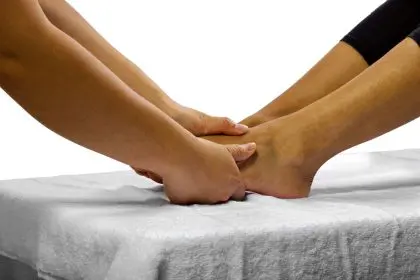Back pain is an all-too-common issue that can disrupt your quality of life, make everyday activities a struggle, and even threaten your ability to work or enjoy hobbies. For some, the pain becomes so severe that surgery is presented as an option. But what if you could avoid going under the knife? There are several effective strategies to help you manage or prevent back issues without resorting to surgery.
1. Strengthening core muscles to protect your spine
One of the most significant factors in spinal health is the strength of your core muscles. Your core includes not just your abdominal muscles but also your lower back, pelvic muscles, and hips. These muscles work together to support your spine and keep your body balanced.
A weak core puts extra strain on your spine, increasing the risk of injury. Regular exercise that focuses on core strengthening, such as Pilates, yoga, or specific physical therapy routines, can make a huge difference in avoiding surgery.
Not only will strengthening your core help with pain relief, but it will also prevent further injury. Think of your core as the foundation for all body movements. When it’s strong, your spine can move with proper alignment, reducing unnecessary wear and tear on the vertebrae.
2. Maintain proper posture at all times
Posture is something many of us overlook, yet it plays a critical role in spinal health. Poor posture can cause uneven wear and tear on the spine, leading to chronic pain or injuries that might eventually require surgery. Whether you’re sitting at a desk, driving, or even standing for long periods, maintaining proper alignment of your spine is key.
For those who spend hours sitting, ergonomic furniture can be a game-changer. A chair that supports your lower back and encourages proper posture can prevent a lot of discomfort. If you stand for long periods, consider using a footrest to relieve pressure on your lower back.
Incorporating simple posture checks into your daily routine can help you avoid strain. Good habits, such as keeping your shoulders back, chin slightly tucked, and weight evenly distributed when standing, are small but impactful adjustments.
3. Regular physical therapy to stay flexible and strong
Physical therapy is often one of the first recommendations for those suffering from chronic back pain, and for good reason. It is an evidence-based approach to treating and managing back issues that may otherwise lead to surgery. A skilled physical therapist can create a tailored plan that includes exercises to improve flexibility, strengthen weak muscles, and promote proper body mechanics.
Therapists can also teach patients how to move in ways that reduce the risk of injury and alleviate the strain on the back. This can include learning how to lift objects properly, how to sleep in supportive positions, and how to transition between sitting and standing without stressing the spine.
By following a physical therapy regimen, many patients have been able to prevent the need for surgery altogether. It provides a non-invasive method for treating the root causes of back pain rather than just managing the symptoms.
4. Lose excess weight to reduce back stress
Carrying extra weight puts significant stress on your spine, especially the lower back. Over time, this additional pressure can lead to herniated discs, sciatica, or other conditions that may require surgery to fix. By maintaining a healthy weight, you can reduce the strain on your back and lower your chances of needing surgery.
Losing weight is not always easy, but it’s essential for your overall health, including spinal health. Combining a healthy diet with regular exercise is the best approach. Focus on low-impact activities such as swimming or cycling that won’t put extra pressure on your back.
Diet plays an important role as well. Reducing processed foods and sugars, and including anti-inflammatory foods like leafy greens, berries, and fish, can help with weight loss and reduce inflammation in your back.
5. Explore alternative therapies for back pain relief
Alternative therapies like acupuncture, chiropractic care, and massage therapy have been used for years to treat back pain and may help you avoid surgery. These therapies focus on alleviating tension, reducing inflammation, and improving blood flow to the affected areas.
Chiropractic care can correct misalignments in the spine, which may relieve pressure on nerves and reduce pain. Acupuncture, on the other hand, has been shown to help by stimulating the body’s natural pain-relief processes. Regular massage can also help by relaxing tight muscles that pull on your spine and cause discomfort.
It’s important to note that these therapies might not be a cure-all for everyone, but many people have found long-term relief when using them in conjunction with other treatments like physical therapy and exercise. Consulting with a health care professional to discuss these options can provide clarity on which methods might work best for your particular condition.
The path to recovery is different for everyone, but the power to heal and protect your body is within your control.Taking these steps not only benefits your back but also promotes overall health and well-being, allowing you to live a fuller, more active life without the looming fear of surgery.
This story was created using AI technology.















